Design Patents: Common and Costly Mistakes to Avoid
By Elizabeth Herbst Schierman
Think of a “patent” and what likely comes to mind is a long, technically-complex document covering the intricacies of an invention—such as a physical machine or article of manufacture. One likely also pictures several highly-detailed patent drawings, each showing many various parts identified by number, as in the example shown in graphic 1.[i]
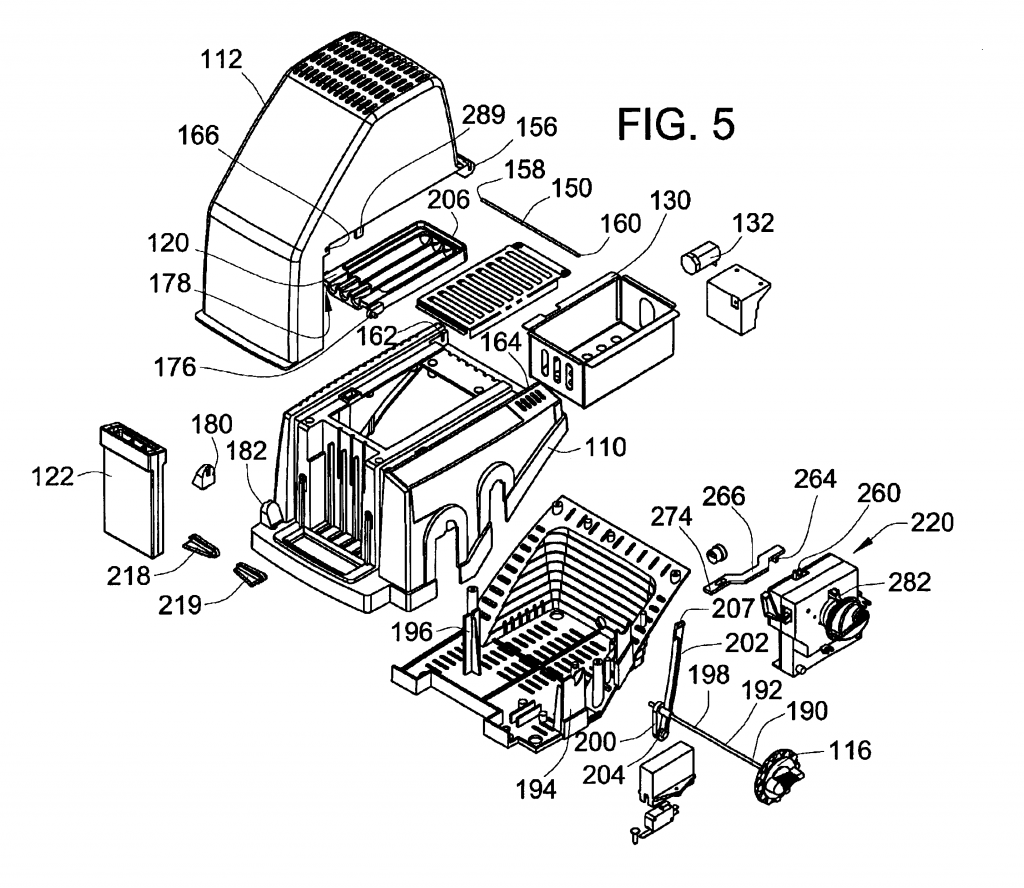
Such a “utility patent” generally protects the actual structure or composition of the invention or the way it is used, i.e., its utilitarian features. A lesser-known type of patent is a “design patent,” the subject of this article. A design patent protects the ornamental features of an invention (e.g., the “look” of the invention).
So, a design patent does not include extensive textual descriptions, and design patent drawings may be less intricately detailed compared to those of a utility patent. Well-crafted design patents may have simple drawings lacking any identifying (e.g., “reference”) numbers, such as the example shown in graphic 2, which is a design patent covering the Apple iPad®.[ii]
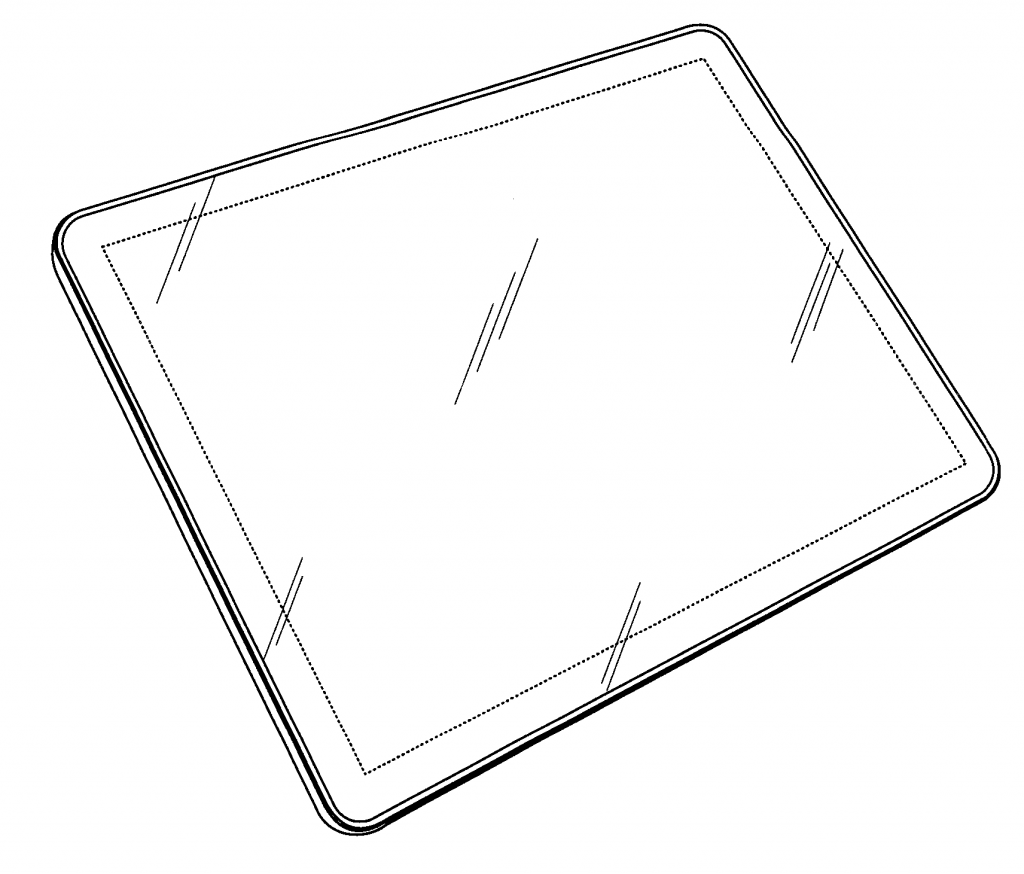
Design patents once held a reputation as being somewhat of the “one-star” patent protection option, compared to the “five-star” protection of a utility patent. Acquiring a design patent is generally much cheaper and faster than acquiring a utility patent. Both design patents and utility patents provide “patented” status for subject inventions, though the scope of protection of a design patent is very different than the scope of protection of a utility patent. It was not unheard of for unscrupulous companies, working with new inventors, to dupe customers into paying large amounts to get a “patent” on an invention, but with the end result being only a design patent with narrow practical protection.
In the current marketplace, however, the ever-growing demand for slick product designs—not just functional products—often leads large retail product manufacturers to pursue design patent protection for their products. The availability of design patent protection for graphical user interfaces (GUI) has also increased the popularity of design patents as a means for protecting aspects of software products. And, after Apple was awarded $399 million in damages for infringement of some of Apple’s design patents by Samsung,[iii] the potentially significant value of design patents reached the spotlight.
That $399 million damages award was subsequently reversed and remanded by the U.S. Supreme Court,[iv] after which a jury awarded Apple an even larger award in the then-ongoing patent battle between the two tech giants. Seeing such large damage award numbers hitting the news headlines and recognizing the potential for substantial damages awards in cases of design patent infringement, many in the intellectual property community have come to view design patents under a more favorable light.
With the renewed general interest in design patent protection should also come a renewed focus on the careful preparation of design patent applications. A widespread misconception may be at the root of the most common and costly missteps in design patent preparation: the misconception that design patents are just like utility patents but with less textual detail. This misunderstanding of design patents can lead to missed deadlines for seeking foreign protection, to overly-narrow design patents, and to being legally precluded from asserting a broad design patent claim construction when trying to enforce the design patent.
Common Mistake No. 1: Miscalculating the foreign-filing deadline
For inventors based in the United States, filing a U.S. patent application is often the first step toward securing patent protection for an invention or design. However, a U.S. patent is enforceable only within the U.S. To have enforceable patent rights in another country or foreign region, appropriate steps must be taken to file for that foreign patent protection before it is too late.
Generally, for a U.S. invention that has been the subject of a utility patent application filed in the U.S., an inventor has a whole year—12 months—from his or her U.S. patent application’s filing date to file any foreign patent applications under the benefit of the earlier U.S. filing date.[v] For designs, on the other hand, the window for seeking foreign design patent protection is generally only six months, half the foreign-filing window for utility inventions.[vi] For the unaware, the six-month deadline comes and goes, often taking it with it the opportunity to protect the design abroad.
Being able to claim priority to an earlier application filing date (e.g., an initial U.S. application filing date) often means the difference between success and permanent failure at acquiring foreign patent protection. Most foreign countries bar inventors or other applications from seeking patents for inventions that were disclosed publicly prior to a patent application being filed.
So, practically speaking, if an inventor files a U.S. patent application, starts to publicly sell the invention as a product in the marketplace, and misses the appropriate deadline to file for foreign patent protection with a priority claim to the earlier U.S. patent application’s filing date, the sales of the invention will likely bar the inventor from the foreign patent protection. With a design patent, mistakenly assuming that the common 12-month foreign filing window for a utility patent application is the same foreign filing window for the design patent application likely means permanent loss of the potentially valuable foreign design patent rights.
Common Mistake No. 2: Including too much detail in the design patent application’s drawings
In a utility patent application, generally, the more detail included in the drawings the better. A greater amount of detail in a utility patent application’s drawings increases the patent applicant’s opportunities to make adjustments to the patent application’s claims during “prosecution,” i.e., during negotiations with the U.S. Patent and Trademark Office as to what may be patentable about the invention. After a patent application is filed, new details about the invention cannot be added to the application, but the patent application claims can generally be re-shaped as long as the descriptions and drawings of the application provide textual and/or figurative support for the re-shaped material. Thus, when it comes to including details in the drawings of a utility patent application, the best practice is generally “the more the merrier.”
With a design patent application, on the other hand, the drawings—not the text—define the scope of the design patent’s protection, for the most part. Thus, the more detail included in the drawings, the more detail may need to be copied by a copy-cat product for it to be considered “infringing.” So, the best practice when preparing a design patent application’s drawings is often “less is more.”
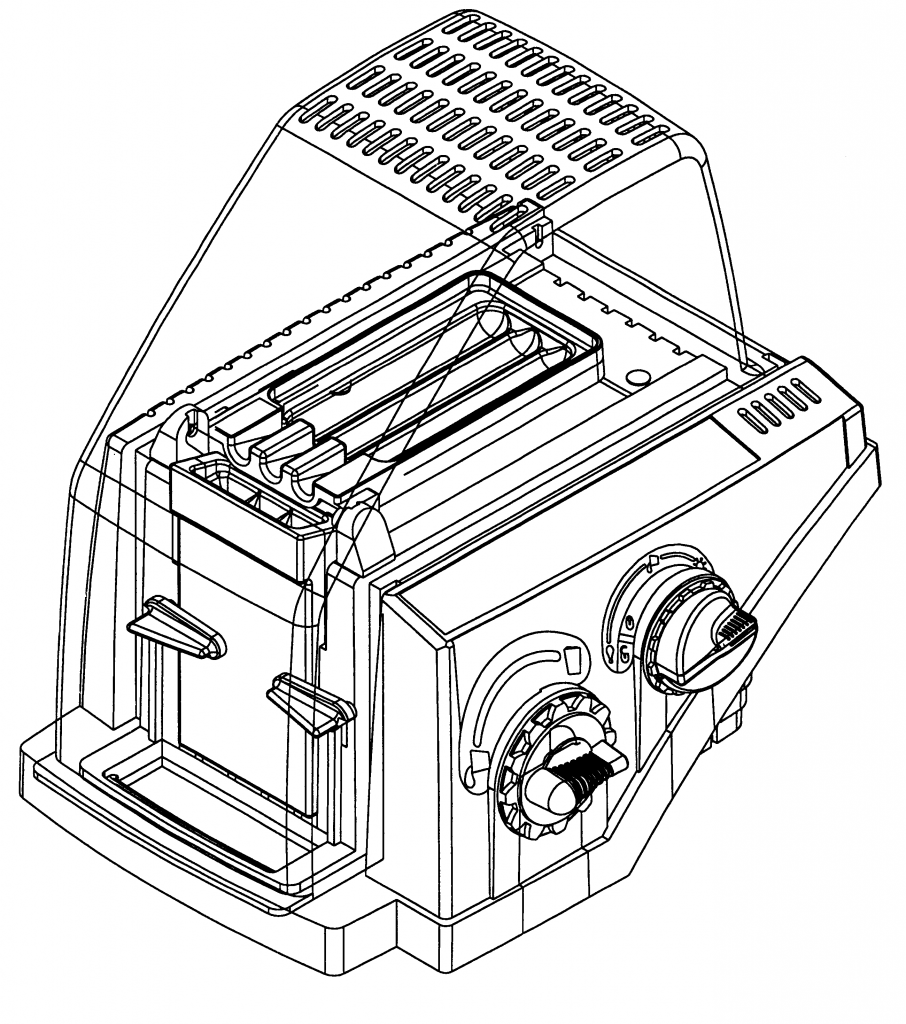
A common misstep when preparing a design patent application is to prepare the drawings as if they were for a utility patent while simply leaving off the reference numbers and lead lines that would normally be included in utility patent application drawings. (See, e.g., the engineering-drawing style patent shown in graphic 3[vii].) Drawings like these, however, are likely to include several features that may actually be nonessential to the design meant to be protected. For example, the drawings may include details like engineering contour lines, screw/nail heads, intricate knob details, particular hinge shapes, etc.
Using utility-style drawings for design patent applications may also bring in views of aspects of the product that would not even be visible in the finished product (e.g., cross-sectional cut‑away views, interior views, exploded views). Such views obviously do not illustrate the “ornamental features” of the claimed design; so, such drawings can lead to rejections from the Patent Office. These otherwise-avoidable rejections take time, and therefore money, to address.
Even without the rejections of the drawings from the Patent Office during prosecution, the unnecessary details in utility-style drawings can lead to costly trouble when trying to enforce the design patent against a competitor. Most likely, drawings with too many details will lead a court to construe the scope of a claimed design more narrowly than it otherwise would have been (i.e., by interpreting the design as including more details than it otherwise would have had) had more careful consideration been given to the preparation of the drawings for the design application.
A competitor may be able to avoid infringement of the design patent merely by leaving out several of the details, while still embodying the more generalized features of the design. A properly crafted design patent application, with only the essential design features in the drawings, would be easier to enforce against a copy-cat competitor.
All this considered, it is important, when preparing the drawings for a design patent application, to take the time to identify and include in the drawings only the essential ornamental features of the design, to ensure that non-essential features—if they are shown—are shown in broken line with appropriate disclaimers (i.e., shown as not “claimed” parts of the design), and to remove internal or otherwise not-externally-visible features from the drawings. While a short and simple utility patent application might rightly give rise to some concern, in the mind of a patent practitioner, as to the application’s completeness, accuracy, and value, a short and seemingly-simple design patent application is a thing of beauty. (For example, take note again of the simplicity of the patent drawing from Apple’s design patent related to the iPad® shown in graphic 2.)
Common Mistake No. 3: Including too many alternative embodiments of the design
While a utility patent may include multiple claims, a design patent is limited to only one claim: the claim for the ornamental design for the article as shown, or as shown and described.[viii] Thus, though a utility patent application often includes many drawings showing different versions of how the invention may be embodied, it is usually best to avoid the over-inclusion of alternatives in a design patent application.
If a design patent application includes several design variations in the drawings, the likelihood of receiving a restriction requirement is high. That is, a patent examiner at the U.S. Patent and Trademark Office, seeing several design embodiments in the patent application, is likely to require the design patent application to elect only one shown design, or only one group of related designs, to pursue as the patent application moves forward in the patenting process.[ix]
The nonelected design embodiments must be pursued in separate (i.e., divisional) design patent applications or else risk surrender of those embodiments to the public. That is, if design alternatives, illustrated in a design application, are considered by a patent examiner to be directed to patentably-distinct designs, the examiner will require the applicant to elect only one design (or group of designs) for that design patent application and to pursue any nonelected embodiments in additional (divisional) design applications. If the applicant fails to file and pursue separate design applications for the nonelected embodiments, the nonelected embodiments of the original application will likely be considered abandoned and available for the public to take.
For example, in 2006, Darren Bach filed a design patent application for the ornamental design of a marine windshield. The drawings of the application included various embodiments of the claimed design with different vent hole and hatch configurations[x]. See graphics 4.1-4.7.
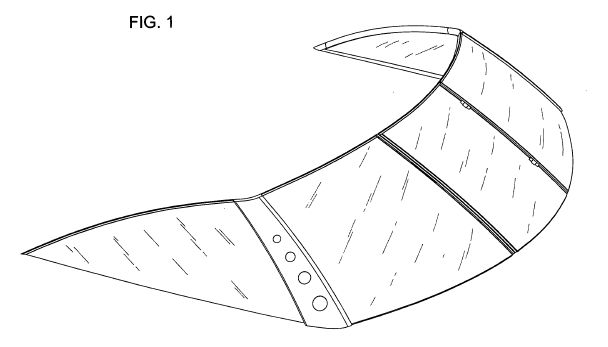
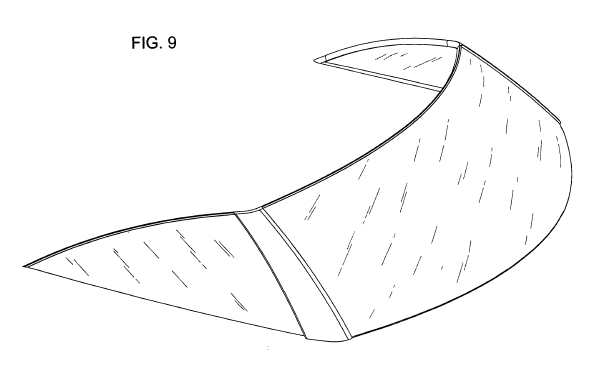
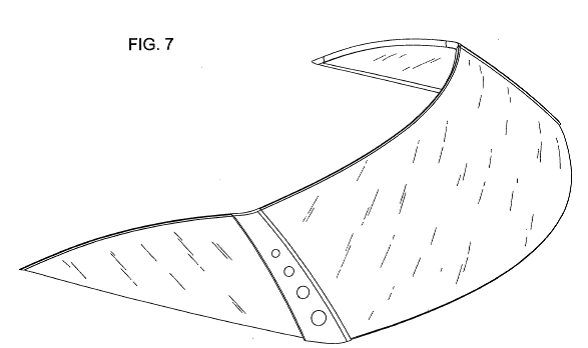
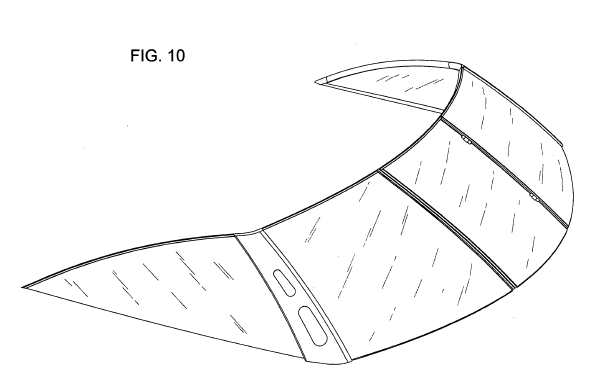
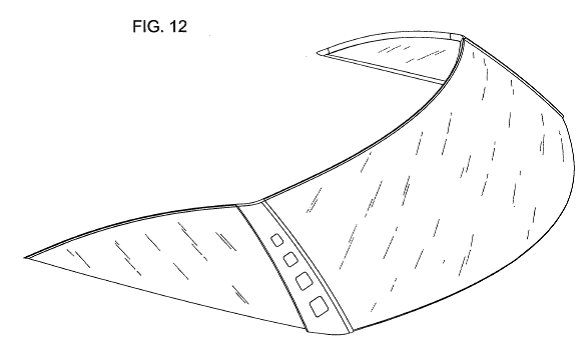
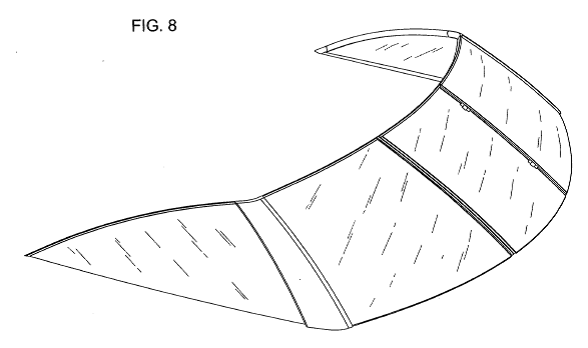
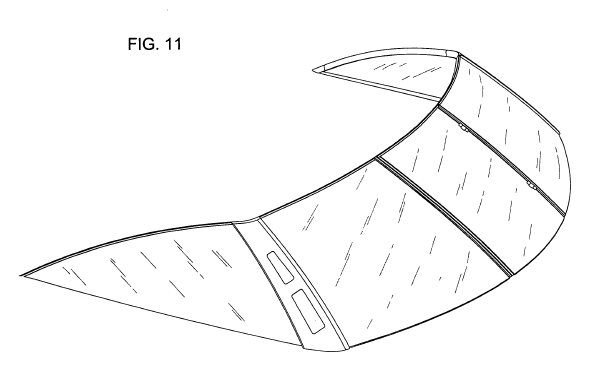
The patent examiner assigned to Mr. Bach’s design patent application determined there were five “patentably distinct groups of designs” and required Mr. Bach to elect only one of (1) the design with four circular holes and a hatch (See graphic 4.1); (2) the design with four circular or square holes and no hatch (See graphics 4.2 and 4.7); (3) the design with no holes and a hatch (See graphic 4.3); (4) the designs with no holes and no hatch (See graphic 4.4); and (5) the designs with two oval or rectangular holes and a hatch (See graphics 4.5 and 4.6).[xi] Mr. Bach elected the first group (i.e., the design shown in graphic 4.1) with four circular holes and a hatch, canceling those shown in graphics 4.2 – 4.7, and went on to secure the design patent for the elected design.[xii] He pursued a divisional design patent for the nonelected embodiment with no holes in the corner post but did not pursue the other nonelected embodiments.[xiii]

In 2011, Mr. Bach’s company sued a competitor alleging infringement of the design patent for the originally-elected design (i.e., the design shown in graphic 4.1 with four circular holes).[xiv] The accused design, shown in graphic 5, had three trapezoidal holes on the corner post.[xv]
The trial court concluded that—by electing the embodiment with four circular holes and canceling (and no longer pursuing) the embodiments with no holes and two holes—Mr. Bach had essentially surrendered to the public the nonelected, non-pursued designs, i.e., the no holes and two-hole designs. Moreover, the trial court concluded Mr. Bach had also surrendered designs within the territory between the elected and patented four-hole embodiment and the nonelected and surrendered two-hole embodiment. So, according to the trial court, Mr. Bach effectively surrendered even three-hole designs, like that of the accused design.[xvi]
On appeal, the Court of Appeals for the Federal Circuit was not as stringent with Mr. Bach as the trial court had been. The Federal Circuit agreed that, by not pursuing the nonelected embodiments of the no-holes and two-hole designs, Mr. Bach had essentially surrendered those designs to the public.[xvii]
But, as to embodiments falling between the elected and surrendered material (e.g., a three-hole design), the court concluded those embodiments had not necessarily been surrendered because—perhaps luckily—Mr. Bach had not included drawings for those embodiments in his application and so, had not necessarily surrendered such designs when electing the four-circular-hole design. Had Mr. Bach included a three-hole design drawing and not elected it or pursued it further, or had the competitor opted for a two-hole design instead of a three, Mr. Bach would likely have been out of luck due to the mistake of over-including embodiments in the original design patent application and a lack of follow‑through after the elections.
Mr. Bach’s tale serves as a warning to design patent practitioners to carefully consider what alternative embodiment drawings to include in an application. Only those drawings that the applicant fully intends to pursue to the end should be included, and the over-inclusion tendencies that are helpful with utility patents should be avoided with design patents.
These mistakes, though common, are hardly the only pitfalls that design patent applications present for the unwary utility patent practitioner. Even so, the above mistakes and many others can be avoided merely by recognizing that design patent applications are different creatures from utility patent applications. Design patent applications should be prepared, not as mere extractions of utility patent applications, but as mindfully crafted documents with the potential for significant, valuable protection for design innovations.

Elizabeth Herbst Schierman is a patent and trademark attorney in Boise. Her patent practice includes prosecuting utility and design patents around the world. She is a two-time past chair of the Intellectual Property Law Section and a long-time member of the Advisory Board for the University of Idaho’s Department of Chemical & Materials Engineering.
[i] Crayon Maker, U.S. Patent No. 6,902,387 B2 (filed Dec. 7, 2001) (issued Jun. 7, 2005) (original assignee being Binney & Smith, Inc.).
[ii] Electronic Device, U.S. Design Patent No. D504889 S1 (filed Mar. 17, 2004) (issued May 10, 2005) (original assignee being Apple Computer, Inc.).
[iii] Samsung Elecs. Co. v. Apple Inc., 137 S. Ct. 429, 433 (2016).
[iv] Id.
[v] See www.wipo.int/pct/en/faq/faqs.html (regarding the twelve-month period provided by the Paris Convention). Outside of the Paris Convention, individual countries may have different periods for foreign priority claims, but a twelve-month period is one of the most common periods.
[vi] See https://www.uspto.gov/patent/initiatives/hague-agreement-concerning-international-registration-industrial-designs (discussing the six-month window under The Hague Agreement).
[vii] Crayon Maker, U.S. Design Patent No. D471572 S1 (filed Mar. 14, 2002) (issued Mar. 11, 2003) (original assignee being Binney & Smith, Inc.).
[viii] § 1503.01, Manual of Patent Examination and Procedure, USPTO.
[ix] 35 U.S.C. § 121.
[x] U.S. Serial No. 29/258,753 (filed Apr. 27, 2006).
[xi] Pac. Coast Marine Windshields Ltd. V. Malibu Boats, LLC, 739 F.3d 694, 698 (Fed. Cir. 2014).
[xii] Id.
[xiii] Id. at 699.
[xiv] Id.
[xv] Id.
[xvi] Id.
[xvii] Id. at 704.

